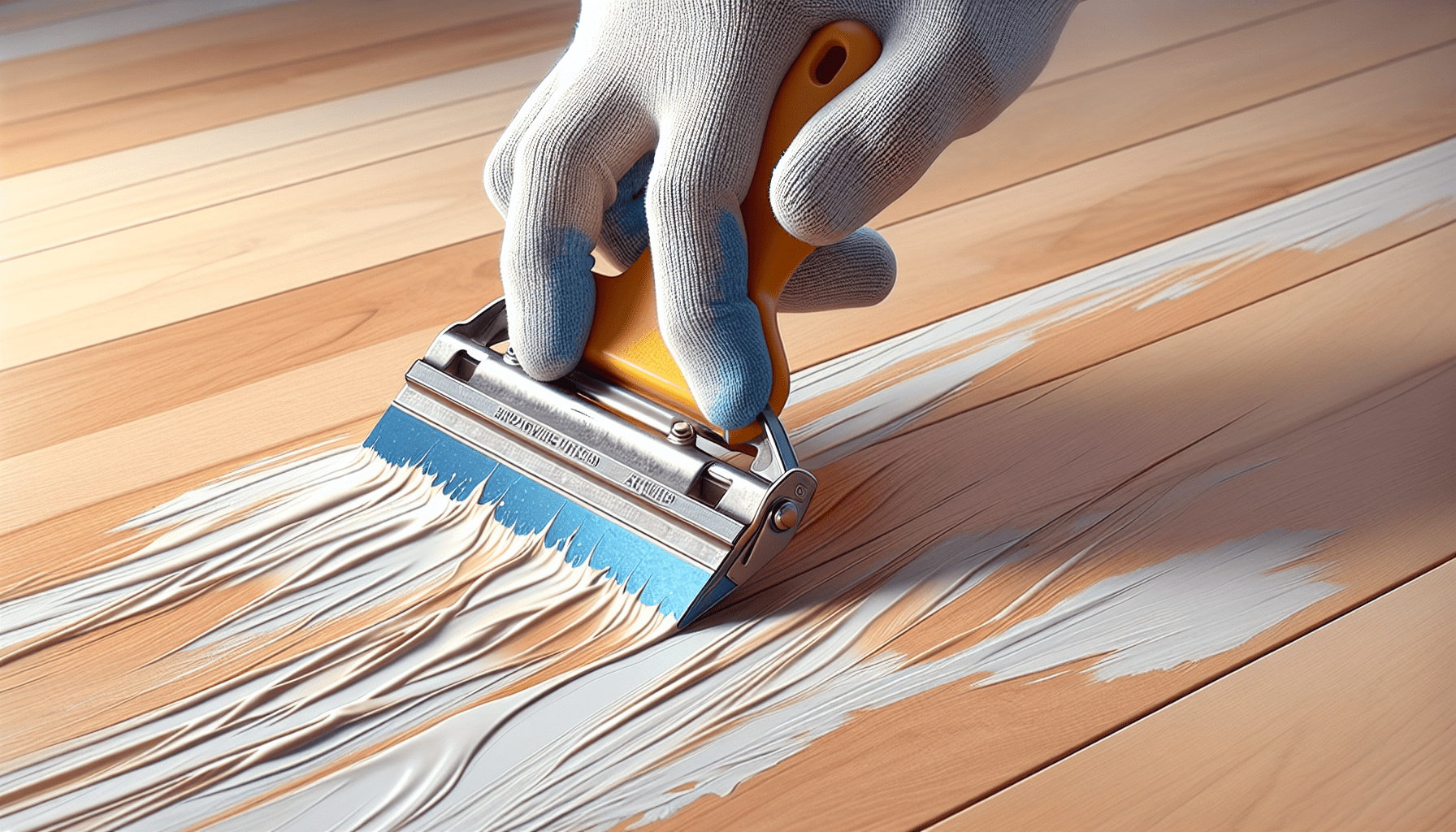When it comes to thinning latex paint, knowing the right tool for the job is essential. Whether you’re a professional painter or a DIY enthusiast, selecting the appropriate solvent or additive can make a significant difference in achieving the perfect consistency and smooth finish for your project. In this article, we will explore various options available to thin latex paint effectively and discuss their advantages and limitations. By understanding these techniques, you can ensure optimal results and take your painting endeavors to the next level.
Why Thin Latex Paint?
Improving Consistency
When it comes to painting, achieving a smooth and consistent finish is essential. Thin latex paint allows for better consistency and flow, helping to eliminate streaks and create an even application. Thinning the paint also enhances its ability to adhere to the surface, resulting in a more durable and long-lasting finish.
Spray Application
Another reason to thin latex paint is to make it suitable for spray application. Spray guns or spray systems are commonly used in larger painting projects or when a flawless, professional finish is desired. However, using undiluted latex paint in a spray gun can lead to clogging and uneven spray patterns. By thinning the paint, it becomes more compatible with the spraying equipment, ensuring a smooth and even coat.
Avoiding Streaks or Uneven Coats
One of the challenges when using thick latex paint is the tendency for streaks and uneven coats to appear. This can be especially problematic when using brushes or rollers. Thin latex paint allows for easy application, reducing the chances of streaking and ensuring a uniform finish. By thinning the paint, you can achieve better control over the application, resulting in a professional-looking and streak-free surface.
Understanding Latex Paint
Composition of Latex Paint
Latex paint is a popular choice for both interior and exterior painting projects due to its versatility and ease of use. It is composed of various ingredients, including pigment, binder, solvent, and additives. The pigment provides color, while the binder acts as a glue, holding the pigment particles together and binding them to the surface. Solvents are responsible for making the paint liquid and facilitating application, while additives enhance properties such as drying time and flow.
Water-Based Properties
One of the key characteristics of latex paint is that it is water-based. Unlike oil-based paints, which use petroleum solvents as a base, latex paint utilizes water as the primary solvent. This water-based property not only makes cleanup easier but also contributes to its low odor, making it more suitable for indoor projects. Additionally, the use of water allows for the thinning of the paint, providing painters with the flexibility to adjust its consistency as needed.
Advantages and Disadvantages
Latex paint offers several advantages over other types of paint. It dries relatively quickly, typically within a few hours, allowing for multiple coats to be applied in a single day. Its low odor makes it more pleasant to work with, particularly in enclosed spaces. Latex paint is also resistant to cracking, peeling, and fading, making it a durable choice for both interior and exterior surfaces. However, it is worth noting that latex paint may not adhere well to certain surfaces, such as bare wood or metal, without the use of a primer.

Types of Thinners for Latex Paint
Water
The most readily available and commonly used thinner for latex paint is water. As latex paint is water-based, adding water helps to reduce its viscosity and make it easier to apply. Water is an excellent choice for thinning latex paint for brush or roller application. It is inexpensive, easy to use, and readily available.
Commercial Paint Thinner
While water may be suitable for most situations, there are instances where commercial paint thinners are preferred. These thinners are specifically formulated to thin different types of paint, including latex paint. Commercial paint thinners can help achieve a more controlled and precise thinning consistency. They are particularly useful when thinning latex paint for airless spray application or when the surface being painted has specific requirements or constraints.
Flow Improver
Flow improvers are another type of thinner that can be used with latex paint. As the name suggests, the primary purpose of a flow improver is to enhance the flow and leveling properties of the paint. While not specifically designed for thinning, flow improvers can help improve the consistency of latex paint by reducing brush marks and surface imperfections. They are commonly used by professional painters to achieve a smoother and more professional finish.
Floetrol Additive
Floetrol is a popular paint additive that serves as a flow conditioner and levelling agent for latex paint. It improves the flow and workability of paint, making it easier to apply with a brush or roller. Floetrol can also help reduce brush or roller marks, minimize foaming, and extend the wet-edge time of the paint. This additive is particularly beneficial when working with latex paint in humid conditions or when looking to create a smooth, brush-free finish.
Using Water to Thin Latex Paint
Proper Water Additions
When using water to thin latex paint, it is essential to add it gradually and in small increments. Start by pouring a small amount of paint into a container and add water slowly while stirring continuously. The goal is to reach the desired consistency without diluting the paint too much. Thinning latex paint too much can result in poor coverage and adhesion, ultimately affecting the quality of the finish.
Stirring and Mixing
To ensure a proper mix, thoroughly stir the latex paint before adding water. This helps to distribute any settled solids or pigment particles and ensures a more consistent blend. After adding water, continue stirring to incorporate it evenly into the paint. Be mindful of any lumps or clumps and work to break them up completely. A well-mixed paint ensures an even application and minimizes the risk of streaks or uneven coats.
Effect on Paint’s Properties
Adding water to latex paint can alter its properties to some extent. The most noticeable change is the decrease in viscosity, or thickness, of the paint. Thinning the latex paint with water can result in smoother flow and better leveling, making it easier to apply. However, it is crucial to note that excessive water addition can affect the coverage and adhesion of the paint. It may also extend the drying time, requiring more patience when applying multiple coats.

Commercial Paint Thinner
Suitability for Latex Paint
Although water is often sufficient for thinning latex paint, there are instances where commercial paint thinners may be more suitable. Commercial paint thinners are generally compatible with latex paint and can provide better results for specific applications. They are especially useful when thinning latex paint for spray applications or when working on complex surfaces that require precise thinning ratios.
Precautions and Safety Measures
When using commercial paint thinners, it is crucial to follow the manufacturer’s instructions and safety guidelines. Paint thinners may contain volatile organic compounds (VOCs) and other hazardous chemicals, and proper ventilation is essential to protect against inhalation and skin contact. Additionally, it is advisable to wear the appropriate personal protective equipment, such as gloves and goggles, when handling paint thinners.
Impact on Drying Time
Commercial paint thinners can have an impact on the drying time of latex paint. Depending on the specific formulation, some thinners may accelerate the drying process, while others may prolong it. It is important to consider the desired drying time when choosing a commercial paint thinner and adjust its use accordingly. Following the manufacturer’s recommendations regarding the appropriate drying time and environmental conditions is crucial to achieving the desired finish.
Thinning Ratios
Commercial paint thinners often come with specific thinning ratios, indicating the amount of thinner to be added to a certain volume of paint. These ratios are designed to achieve optimal consistency and flow for specific applications and equipment. It is important to carefully follow the recommended thinning ratios to ensure the best possible results. Deviating from the suggested proportions can result in an inconsistent or compromised finish.
Flow Improver
Advantages for Thinning Latex Paint
Using a flow improver to thin latex paint offers several advantages. Flow improvers are designed to enhance the flow and leveling properties of the paint, making it easier to apply with a brush or roller. They can minimize brush marks, surface imperfections, and coarseness, resulting in a smoother and more professional-looking finish. Flow improvers are particularly beneficial when working with thick latex paint, which can be challenging to apply evenly.
Compatibility with Spraying Equipment
Flow improvers are also compatible with spraying equipment, making them a versatile choice for thinning latex paint for spray application. They help to reduce clogging and ensure a smoother spray pattern, resulting in an even and consistent coat. When using a flow improver for spray application, it is important to follow the manufacturer’s instructions regarding the appropriate ratios and settings for the spray equipment being used.
Instructions and Ratios
To thin latex paint using a flow improver, carefully read and follow the manufacturer’s instructions. The recommended ratios may vary depending on the brand and desired consistency. In general, flow improvers are added gradually to the paint while stirring continuously, similar to adding water. It is important to adhere to the suggested ratios to achieve the desired flow and leveling properties. Testing the thinned paint on a small area or scrap material beforehand is always recommended to ensure the desired results.
Floetrol Additive
Latex Paint Flow Enhancement
Floetrol additive is specifically designed to enhance the flow and workability of latex paint. It improves the overall consistency, making it easier to apply with a brush or roller. Floetrol helps to reduce brush or roller marks, minimize foaming, and extend the wet-edge time of the paint, allowing for a more uniform and professional finish. This additive is particularly beneficial when working with latex paint in challenging conditions, such as high humidity or elevated temperatures.
Benefits for Brush and Roller Application
When thinning latex paint with Floetrol, the paint becomes smoother and more manageable, reducing the chances of visible brush or roller marks. It allows for better control over the application, ensuring an even and consistent coat. Floetrol additive extends the drying time slightly, which is advantageous when painting larger surfaces or in situations where a longer working time is desired.
Recommended Usage Instructions
To use Floetrol additive with latex paint, follow the manufacturer’s instructions for the recommended usage ratios. Generally, Floetrol is added gradually to the paint while stirring continuously. The suggested ratios may vary depending on the desired effect and the paint’s characteristics. As with any paint additive, it is important to test the thinned paint on a small area or scrap material before proceeding with the full application.
Testing and Adjusting Paint Consistency
Test on Scrap Material
Before applying thinned latex paint to the actual surface, it is essential to conduct a test on a scrap piece of material. This allows you to assess the consistency, coverage, and adhesion of the thinned paint. Apply the thinned paint to the scrap material using the desired method, whether it be brushing, rolling, or spraying. Evaluate the results to ensure the thinned latex paint meets your expectations in terms of consistency, flow, and overall finish.
Adjusting with Thinner or Additive
If the test results reveal that the thinned latex paint is not meeting your desired consistency, adjustments can be made. Depending on the situation, adding more paint thinner, water, flow improver, or Floetrol can help achieve the desired outcome. It is important to follow the recommended ratios and gradually add the chosen thinner or additive while thoroughly mixing the paint. Repeat the testing process until the desired consistency and finish are achieved.
Repeating the Test
After making adjustments to the thinned paint, it is crucial to conduct another test on a scrap material. This allows you to evaluate the impact of the adjustments and determine if further modifications are necessary. By repeating the testing process, you can fine-tune the thinned latex paint to ensure optimal consistency, coverage, and finish before proceeding with the actual painting project.
Equipment and Tools for Thinning Latex Paint
Mixing Containers
When thinning latex paint, having suitable mixing containers is essential. These containers should be large enough to accommodate the desired amount of paint and provide enough room for stirring without causing spills. Options can range from buckets or larger paint cans to specialized paint mixing containers available at hardware stores. Choose containers that are clean, sturdy, and have secure lids to prevent any accidental spills or contamination.
Stir Sticks or Paddles
Stir sticks or paddles are necessary tools for thoroughly mixing the paint and any added thinner or additives. These tools help incorporate the different components of the paint and ensure a consistent blend throughout. Wooden stir sticks or plastic paddles are commonly used and are readily available. It is important to use a clean stir stick or paddle to avoid introducing any contaminants that could affect the paint quality.
Measuring Tools
Accurate measurements are crucial when adding thinner or additives to latex paint. Having measuring tools such as cups or syringes on hand ensures that the correct ratios are maintained. Graduated cups or syringes with clear markings are ideal as they allow for precise measurements and minimize the risk of guesswork or inaccuracies. Measure the thinner or additive carefully to ensure the desired consistency and to avoid over-thinning the latex paint.
Spray Guns or Spray Systems
If spray application is part of your painting project, having the appropriate spray guns or spray systems is crucial. These tools allow for a more efficient and professional finish, particularly when working on larger surfaces or intricate details. Choose spray guns or systems that are designed for latex paint and ensure compatibility with the chosen thinner or additive. Follow the manufacturer’s instructions regarding the setup, spraying technique, and cleaning process to achieve the best results.
Brushes and Rollers
When using brushes or rollers to apply thinned latex paint, it is important to choose the right tools for the job. Quality brushes and rollers can significantly impact the overall finish and ease of application. For brushes, select those with synthetic bristles that are suitable for latex paint. Roller covers should be of adequate thickness and nap length, depending on the surface being painted. Clean brushes and rollers thoroughly before use to remove any loose bristles or lint that may compromise the final results.
Tips and Considerations
Follow Manufacturer’s Recommendations
It is essential to read and follow the manufacturer’s recommendations for the paint, paint thinners, and additives being used. Each product may have specific instructions regarding usage, ratios, compatibility, and safety precautions. By adhering to these guidelines, you can ensure optimal results and minimize the risk of issues such as poor coverage, adhesion problems, or compromised paint quality.
Test on Small Area before Painting
Before applying thinned latex paint to the actual surface, always conduct a test on a small and inconspicuous area. This allows you to evaluate the thinned paint’s performance and make any necessary adjustments before proceeding with the full project. It also serves as an opportunity to assess how the thinned paint adheres and dries on the specific surface and ensures you are satisfied with the final finish.
Work in a Well-Ventilated Space
When working with paint thinners or additives, it is crucial to ensure proper ventilation. Paint thinners typically contain volatile organic compounds (VOCs) and can emit strong fumes, which can be harmful when inhaled in high concentrations. To minimize the risk of respiratory or health issues, work in a well-ventilated area. Open windows or use exhaust fans to improve air circulation and remove any fumes.
Properly Dispose of Thinned Paint
Proper disposal of thinned paint is essential to protect the environment and comply with local regulations. Never pour thinned latex paint down the drain or discard it in the trash. Instead, consult your local waste management facility or recycling center for specific instructions on how to dispose of thinned paint or paint-related waste. Many communities have specific collection programs or guidelines for the safe disposal of paint products.
In conclusion, thinning latex paint offers numerous benefits, including improved consistency, compatibility with spraying equipment, and avoiding streaks or uneven coats. Understanding the composition and properties of latex paint is essential to choose the appropriate methods and materials for thinning. Water, commercial paint thinners, flow improvers, and Floetrol additives are commonly used to thin latex paint, each with its own advantages and considerations. Effective testing and adjusting of paint consistency, along with using the right equipment and tools, are crucial for achieving optimal results. By following the recommended guidelines, proper safety measures, and disposal practices, you can achieve a professional-looking finish and ensure a successful painting project.



